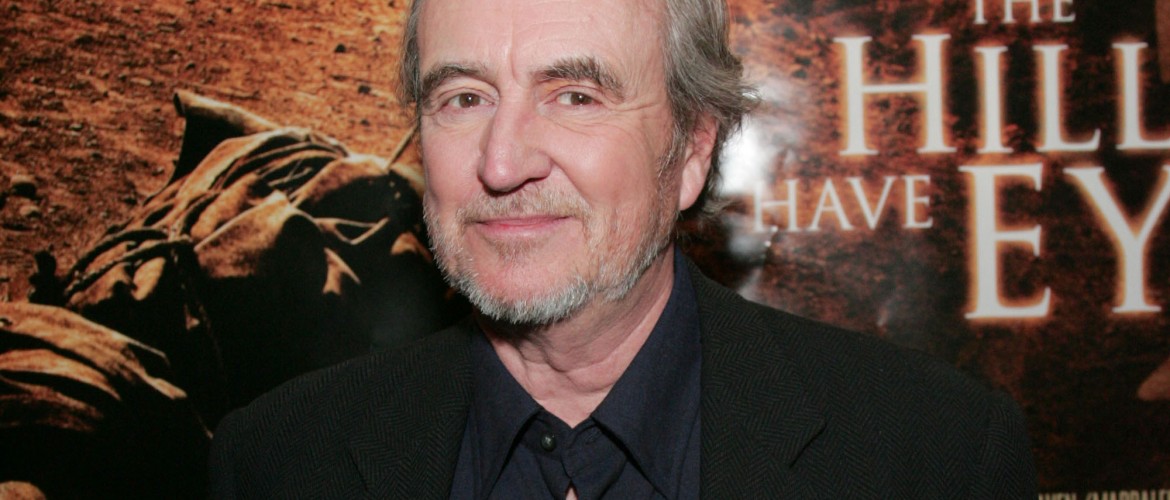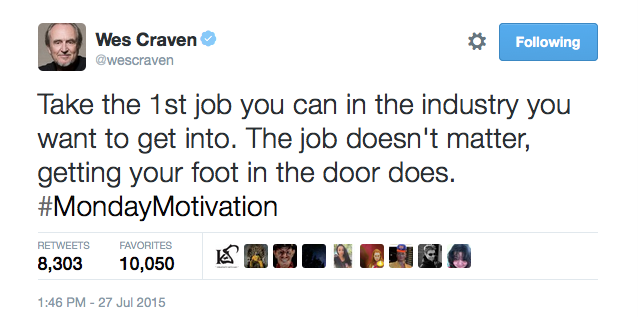Years before venturing off to Grad school, 2004 was a special year during my undergraduate years. Wes Craven, the Godfather of Horror and best known for his horrifying icon Freddy Krueger (Robert Englund) from A Nightmare on Elm Street, spoke to a bunch of us budding filmmakers and soon to be entertainment professionals at [1]Cal-State Long Beach, where I would later obtain my bachelor’s in film production and electronic media.
What I remember most about Craven was that he was a humble and down to earth man. I remember him stating how the industry was a challenge to break into and that many people who set out to become filmmakers wind up stuck in jobs within the industry they initially wished to avoid. He inspired me with his story of how he broke into the industry because it’s very much unlike how 20-somethings do it today, so eager to make their mark without much life experience.
Wes Craven was initially an English professor, having earned his master’s degree in writing at John Hopkins University. He was also a magazine editor at one point. Craven didn’t make his first feature film until he was 33 years old, when in 1972 he impressed everyone with the cult classic The Last House on the Left inspired by Ingmar Bergman’s The Virgin Springs
. Though, I recall him specifying to the class that it really wasn’t until 1984 when he was 45 years old, that the making A Nightmare on Elm Street would finally put him on the map.
He began writing the script in 1981 after being inspired by an LA Times article from a couple of years earlier about the nightmares experienced by a group of escaped Khmer Rouge refugees who fled to the United States after the bombing of Cambodia. Craven was especially inspired by the fact that these refugees not only suffered from these night terrors but that some ended up dying in their sleep. Medical professionals would called it [2]Brugada syndrome (aka [3]Asian death syndrome or [4]sudden unexplained death syndrome).
Interestingly enough, some of the major studios – Walt Disney Pictures, Paramount Pictures, Universal Studios – initially turned down Craven’s pitch. In the end, it was picked up by New Line Cinema, which coincidentally earlier this month [5]announced A Nightmare on Elm Street remake.
Wes Craven understood horror in a philosophical way that I hadn’t expected. I recall his explanation of the subtext of horror to the 2004 class at CSULB being something similar to what he told [6]John Hopkins Magazine in 2001:
“The 20th century was, in fact, the first cinematic century, and nothing could have prepared our minds for what its real footage taught. We all have those sorts of images seared into our brains, from Little Rock, Cambodia, Jonestown, Rwanda, Bosnia – and countless other places and times when we watched civilization evaporate in the white heat of homicidal madness.
I mention all this unpleasantness for a reason. Modern horror films, of which I am admittedly a practitioner, are to me simply post-traumatic nightmares of a world that has seen more horror than it can handle alone. Why do people pay good money to go into a theater and to be terrified by a movie? They don’t. They’re already terrified by real life. What they go into that theater for is to have the terror of real life marshaled into some sort of order, so it can be dealt with. The chaos is caged for a few hours in a graspable narrative. And the hero or heroine makes his/her way through the worst we all can imagine and comes out on the other side not only alive, but steeled by that most basic of realizations – that survival is within us all. That this is all experienced in an informal community of peers, in a half-dreamlike state where personal fear is suddenly shared fear, is exhilarating.”
Wes Craven left a lasting mark on the horror genre and on filmmaking in general, and he inspired some of us at CSULB back in 2004 to follow our dreams. He will continue to inspire long after his passing. Though he finally succumbed to brain cancer, his spirit and vision live on.
[1] http://web.csulb.edu/~d49er/archives/2004/fall/diversions/volLVno39-horror.shtml
[2] http://emedicine.medscape.com/article/163751-overview
[3] http://articles.latimes.com/1987-01-11/news/mn-3961_1_asian-refugees
[4] http://www.ncbi.nlm.nih.gov/pmc/articles/PMC1647019/
[5] http://www.tracking-board.com/tb-exclusive-new-line-cinema-plots-new-nightmare-on-elm-street-reboot/


